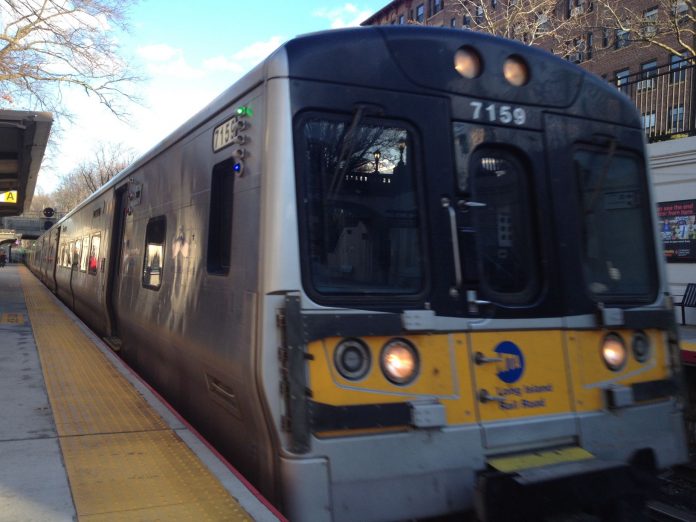MTA-run trains, subways and buses are rapidly emptying out as COVID-19 continues to spread and the state shuts down all nonessential operations.
The MTA reported on Monday that ridership was down 67 percent on the LIRR, 90 percent on Metro-North, 60 percent on the subway and 49 percent on buses.
As of Thursday, 23 MTA workers, including four LIRR workers, have tested positive for coronavirus.
MTA Chairman and CEO Patrick J. Foye said in a statement, “These individuals are in quarantine or receiving appropriate care . . . The MTA is working closely with the state Department of Health to identify any colleagues who came in contact with employees who are confirmed, send them home to self-quarantine, provide access to necessary testing and immediately and aggressively disinfect the workplace.”
The MTA now disinfects subway stations twice a day, and its full fleet of trains, cars and buses once every 72 hours. They no longer accept cash fare payments at ticket counters or on trains, in an effort to avoid unnecessary contact.
LIRR and union officials, including LIRR president Phil Eng, explained and demonstrated heightened cleaning procedures to the public at the Hicksville LIRR Station on Thursday at 1 p.m.
Utility pole relocation, part of the LIRR expansion project from Floral Park to Hicksville, will continue, the 3TC Community Ambassador Team announced in a statement on Thursday.
MTA workers are demanding better protection from the MTA during the ongoing crisis.
Two New York transit unions, ATU Local 726 and TWU Local 100, have called on MTA to implement additional health and safety measures.
ATU Local 726 sent a letter to the MTA on Tuesday asking them to limit bus capacity to 50 percent, require riders to enter through the rear doors of buses and suspend fare collection on buses due to the proximity of fare boxes to drivers.
“This is an extraordinary crisis, and the Union does not make these requests lightly,” wrote Danny Cassella, president of ATU Local 726. “Given that it appears people can become infected and remain asymptomatic but still spread the virus to others, the membership of the Union believes the above recommendations are not only important for their health, but for the riding public, as well.”
The MTA said that it will review the union’s requests.
Due to drastically decreased ridership, the MTA has found itself in a financial crisis.
On Tuesday, Foye issued a letter to the New York congressional delegation requesting more than $4 billion in federal aid.
New York Congressman Jerry Nadler said in an interview with NY1 that he hopes the MTA can get federal aid by next week. He added that MTA should ask for more than $4 billion.
“They’re going on the assumption, for which there’s no evidence, that this plague will be gone very shortly and they’re being very, very optimistic,” Nadler said. “They should be asking for a lot more money.”
Foye announced in a statement on Wednesday that the MTA is drawing down $1 billion on its existing line of credit on Friday to offset continuing revenue loss and increased expenses due to the COVID-19 pandemic.
This is not, however, a comprehensive or long-term solution, Foye clarified.
“This is a national disaster that requires a national response and we are urgently requesting the federal government provide more than $4 billion in federal funding to ensure the financial health of the MTA,” he said in a statement on Wednesday. “We cannot afford to wait.”
Foye cited the transit system’s crucial role in allowing medical professionals, first responders, transportation workers and childcare workers to continue to do their jobs as the crisis grows.
Lisa Daglian, director of the Permanent Citizens Advisory Committee to the MTA, echoed this sentiment.
“Riders are gonna be the ones who are affected by any loss of funds for the MTA,” she said. “We need to ensure that service continues to run, repairs continue to be made, that the workforce continues to get paid.”



